#Industrial Construction Solutions
Explore tagged Tumblr posts
Text

EPACK Prefab offers customized solutions for Industrial Factory Buildings, delivering durable, cost-effective, and efficient structures. Designed with precision using advanced pre-engineered techniques, our factory buildings ensure optimal functionality and space utilization.
✅ Key Features:
Quick construction with PEB technology
High-quality steel ensuring strength and durability
Energy-efficient designs with insulated panels
Custom layouts to suit specific industrial needs
��� Contact EPACK Prefab today for innovative factory building solutions tailored to your requirements!
#Industrial Factory Building#Factory Building Construction#Pre-Engineered Buildings#PEB Structures#Industrial Construction Solutions#Steel Factory Buildings#Warehouse Construction#Prefabricated Industrial Buildings#Durable Factory Buildings#Custom Industrial Structures#EPACK Prefab#Modern Industrial Construction#Factory Building Design#Turnkey Construction Solutions#Industrial Building Manufacturers#Energy-Efficient Buildings#Steel Structures for Factories#Fast Construction Solutions#Prefab Industrial Structures#Reliable Factory Buildings
0 notes
Text
Sara Qazi, in her interview with The Boss Magazine, discusses the burgeoning hemp housing market and its potential to revolutionize the construction and real estate industries.
#Sara Qazi#hemp housing#sustainable construction#hempcrete#carbon-negative building materials#environmental benefits#affordable housing solutions#hemp industry#industrial hemp#innovative building materials
2 notes
·
View notes
Text
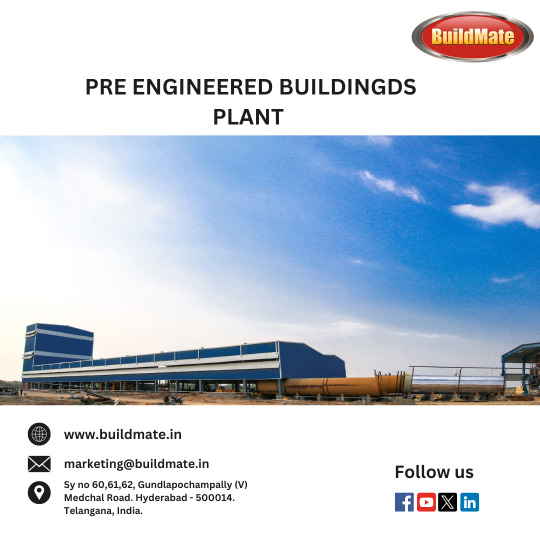
PEB Plant
#pre engineered buildings manufacturer#pre engineered building structure#Pre engineered building solution#pre engineered building fabricators#pre engineered metal building manufacturers#Pre-engineered metal buildings#PEB construction companies#PEB suppliers#Industrial building manufacturers#Commercial building manufacturers#Warehouse manufacturers#Factory building manufacturers#PEB manufacturers in India#Construction equipment manufacturers#Building material manufacturers
2 notes
·
View notes
Text
Exploring Innovations in Chemical Manufacturing
In the dynamic world of chemical manufacturing, particularly in the fields of industrial materials and silica products, companies like Minmetals East are leading the charge in creating high-quality solutions. One of the standout products in their lineup is the checker plate aluminium, which is known for its durability and versatility in various applications.
Checker plate aluminium is an excellent choice for construction materials due to its lightweight properties and resistance to corrosion. This makes it ideal for use in environments where strength and longevity are crucial. Minmetals East ensures that their aluminium products meet the highest standards, providing customers with reliable materials that can withstand the test of time.
Furthermore, in the realm of adhesives, Minmetals East offers innovative solutions that enhance the bonding process in construction and manufacturing. Their adhesives are designed to work seamlessly with various substrates, ensuring strong and lasting connections.
In addition, water treatment processes benefit significantly from the advancements in chemical manufacturing. Minmetals East is committed to providing eco-friendly solutions that contribute to cleaner water systems, promoting sustainability in industrial practices.
Overall, the commitment of Minmetals East to excellence in chemical manufacturing, along with their focus on innovative products like checker plate aluminium, positions them as a leader in the industry. Their dedication to quality and sustainability is paving the way for a brighter future in industrial materials.
#innovation#eco-friendly solutions#checker plate aluminium#water treatment#industrial practices#durability#construction materials#adhesives
0 notes
Text
Understanding Load Stress Calculations and Techniques to Prevent Overloading in Chain Pulley Blocks

Chain pulley blocks, also known as chain hoists, are essential tools for lifting heavy loads in industries like construction, warehousing, and manufacturing. However, improper use or overloading can lead to serious accidents, mechanical failures, and unnecessary wear and tear. Calculating load stress and adhering to load limits is vital to ensure safe and efficient operation. This article provides a detailed step-by-step guide to calculating load stress and preventing overloading on chain pulley blocks, while also exploring related safety practices.
Understanding Load Stress in Chain Pulley Blocks
Load stress refers to the force exerted on a chain pulley block when it is lifting or suspending a load. If the force exceeds the equipment's rated capacity, it can result in:
Chain deformation or breakage
Pulley malfunction
Workplace accidents or injuries
Load stress is influenced by factors such as the weight of the load, the angle of lift, the condition of the chain, and environmental factors like vibration or wind.
Step-by-Step Guide to Calculating Load Stress
Step 1: Determine the Weight of the Load
The first step in calculating load stress is knowing the total weight of the object being lifted. This information can often be found in product specifications, packaging, or through direct weighing.
Example: If you're lifting a pallet of steel rods weighing 500 kg, the load weight is 500 kg.
Step 2: Account for Additional Forces
If the load is being moved at an angle (e.g., not lifted vertically), additional forces come into play due to gravity and tension.
Use the formula for calculating the effective load based on the angle of lift:
Effective Load=Load Weightcos(θ)\text{Effective Load} = \frac{\text{Load Weight}}{\cos(\theta)}
Where:
θ\theta is the angle of the load from the vertical.
Example: If the load is lifted at a 30° angle, the effective load is:
Effective Load=500cos(30)=5000.866≈577.4 kg\text{Effective Load} = \frac{500}{\cos(30)} = \frac{500}{0.866} \approx 577.4 \, \text{kg}
Step 3: Include Dynamic Forces
Dynamic forces occur due to movement, such as accelerating or decelerating the lift. To account for this, add an extra 10–20% to the calculated load to ensure safety.
Dynamic Load:
Dynamic Load=Effective Load×1.2\text{Dynamic Load} = \text{Effective Load} \times 1.2
Example:
Dynamic Load=577.4×1.2=692.88 kg\text{Dynamic Load} = 577.4 \times 1.2 = 692.88 \, \text{kg}
Step 4: Compare with the Chain Pulley Block's Rated Capacity
The rated capacity, also called the Safe Working Load (SWL), is the maximum load a chain pulley block can safely handle. Ensure the dynamic load is within the SWL of the equipment.
Example: If your chain pulley block has an SWL of 1,000 kg, the calculated dynamic load of 692.88 kg is well within safe limits.
Preventing Overloading on Chain Pulley Blocks
Preventing overloading is not just about calculating load stress but also implementing proactive measures. Follow these best practices to ensure safety:
1. Always Know the Rated Capacity
Each chain pulley block has a rated capacity, typically marked on the equipment. Never exceed this capacity, even for short lifts or small loads.
Tip: Use a chain pulley block with a slightly higher capacity than your calculated load to allow for unexpected dynamic forces.
2. Perform Pre-Use Inspections
Regular inspections help identify potential issues that could compromise the equipment's load capacity.
Check for worn-out chains, frayed wires, and deformed hooks.
Look for signs of rust, corrosion, or misaligned components.
Ensure the load chain is properly lubricated to minimize friction.
3. Avoid Shock Loading
Shock loading occurs when a load is suddenly applied or dropped onto the chain pulley block, resulting in stress that exceeds the SWL.
Lift loads smoothly and steadily to avoid abrupt movements.
Never use the chain pulley block to catch falling loads.
4. Distribute Loads Evenly
When lifting irregularly shaped or unbalanced loads, ensure the weight is evenly distributed across the chains and hooks. Uneven weight distribution increases stress on specific components and can cause premature failure.
5. Use Safety Accessories
Enhance safety by using appropriate accessories, such as:
Load limiters: These devices automatically prevent the pulley from lifting loads beyond its rated capacity.
Overload indicators: Visual indicators that alert operators when the load exceeds safe limits.
6. Train Operators
Inadequate training is a leading cause of equipment misuse and overloading. Ensure that operators understand:
How to calculate load stress
The equipment’s SWL
Proper lifting techniques and safety protocols
7. Monitor the Environment
External factors like wind, vibration, or temperature can affect the performance of a chain pulley block. Always account for these when planning a lift.
Avoid using chain pulleys in high winds or extreme weather.
Ensure the ground is stable and free from vibrations.
Consequences of Overloading
Overloading chain pulley blocks can lead to severe consequences, including:
Equipment Failure: Overloading stresses the chain and gears, causing wear and breakage.
Workplace Accidents: Dropped loads can injure workers, damage property, or block operations.
Reduced Lifespan: Frequent overloading shortens the lifespan of the chain pulley, leading to costly replacements.
Legal Penalties: Operating overloaded equipment violates safety regulations, potentially resulting in fines or shutdowns.
Proactive Maintenance for Load Stress Prevention
In addition to calculating load stress, regular maintenance ensures the chain pulley operates at peak performance. Key maintenance practices include:
Chain Inspection: Look for elongation, kinks, or damage in the load chain.
Gear Lubrication: Regularly lubricate moving parts to reduce friction and wear.
Hook Checks: Inspect hooks for deformation or cracks.
Load Testing: Conduct periodic load tests to verify that the equipment can handle its rated capacity.
Proper calculation of load stress and adherence to load limits are critical for the safe and efficient use of chain pulley blocks. By following the steps outlined in this guide—such as calculating effective and dynamic loads, inspecting equipment, and implementing safety practices—you can significantly reduce the risk of overloading and mechanical failure. Incorporating proactive maintenance, operator training, and safety accessories further ensures that your equipment performs optimally and remains compliant with safety standards. Remember, safety in material handling isn’t just about protecting equipment—it’s about safeguarding lives and creating a more efficient work environment.
#chain pulley blocks#industrial equipment#lifting solutions#chainblockpulley#material handling#chainblock#manualchainpulleyhoist#chainpulley#pulleyblocksystem#construction#hoist
0 notes
Text
Rock Anchoring Services in Maharashtra | Anchoring Constructions 9923437177
SB Demolition Offers Reliable Rock Anchoring Services in Maharashtra. Ensure Stability And Safety For Your Construction Projects With Our Expert Solutions.

#Rock anchoring Pune#Rock anchoring Maharashtra#Rock anchoring services Pune#SB Demolition rock anchoring in Maharashtra#Rock anchor installation Pune#Construction rock anchoring in Maharashtra#Structural rock anchoring Pune#Rock anchor contractors Pune#Professional rock anchoring in Maharashtra#Safe rock anchoring services in Maharashtra#Rock stabilization solutions in Maharashtra#Industrial rock anchoring Pune#Geotechnical rock anchoring in Maharashtra#Rock support systems Pune#Rock anchoring for construction projects in Maharashtra
0 notes
Text
#Accounting Advisory Servies USA#Accounting and Bookkeeping services for Business#Accouting and Bookkeeping services USA#Best Auditing Services in USA#Hire Accounting Associates in USA#Hire Audit Supervisor in USA#Hire Bookkeeping Associates in USA#Best CRM Software with Collaboration Tools#CRM solutions for Team Colloboration#Best construction CRM Software#CRM Solutions for Construction Management#Best contract management systems in USA#CRM Software for document management#Best CRM for customer support#CRM for customer service solutions#Customer service software in USA#Agile software development services USA#Business Process Automation USA#IT Consulting Service in USA#Lead management CRM software#Lead tracking CRM software#Best CRM for Financial Services#Financial Services CRM Software#Best GRC Software Solutions in USA#CRM for small businesses#CRM Solutions#Top CRM Software USA#Best CRM Software in USA#Industry Specific CRM Solutions#best free crm for insurance agents
0 notes
Text
Reliable Payroll Service Provider Company in the UK - Quest360 Financial
Most organizations have a lot on their plates, and payroll processing is usually complex and time-consuming. Be it an independent contractor, a new start-up, a small and medium enterprise, or an agency through which numerous employees are paid payroll services UK, Quest360 Financial remains the trusted partner providing curated payroll solutions that are compliant, transparent, and meet the specific needs of the UK's workforce.
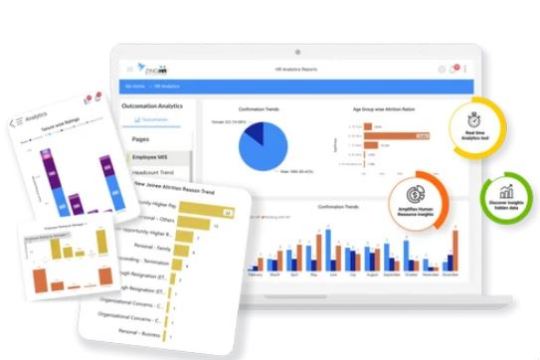
Custom Payroll Solutions for Any Business
When it comes to bespoke services that are for contractors, and firms ranging from independent start-ups to multinational companies, Quest360 with over a decade of experience in the recruitment business, having managed complete payroll process delivery, understands payroll systems perfectly.
1. To contractors:
The contractors generally handle two or three shifts with a number of clients. Hence, accuracy becomes a vital concern in calculating payroll. The easy, apparent, and quick umbrella payroll solutions furnish contractors with accurate and timely payments without any kind of administrative burden.
2. To Business and Agencies:
Big payrolls of contractors or employees are mind boggling. Quest360 now brings outsourced payrolls specific and tailored to your needs. It lets you continue with the hands-on growth of your business, while Quest360 takes care of the payrolls and finances, including payments to your staff, bookkeeping, and HMRC submissions.
Why Quest360 Payroll Service Provider Company in the UK?
There are many companies providing payroll services in UK. But Quest 360 financial has best services, transparency, and accuracy. Quest360 is the payroll management provider, perfectly fits the bill.
1. Compliance with Legislative Requirements:
There will be no penalties on account of tax non-compliance, as there must be absolutes pertaining to compliance on payroll laws in the UK. Ensuring that there is up-to-date adherence with the changes.
2. Accurate and Timely Payments:
Delivering payroll with integrity and precision is our goal. In reference, from contractor shifts to payrolls of small and medium businesses, we guarantee timely and accurate payments.
3. Services Flexible and Further Scalable:
Our payroll dream never ends. Start-up or a big business, our flexible payroll solutions grow as per requirements. Being a payroll service provider company UK, we do personalized services as per your business needs at any level of growth.
4. Every Step Transparent:
At Quest360, we understand that transparency is vital. Our payroll systems are made to be open and clear so that contractors and clients alike understand completely how things work along the process.
Outsource payroll management to save time and resources.
Outsource payroll services to offer a business-owning solution beyond the cost-saving option. Quest360 takes away the burden of payroll and bookkeeping management, enabling you to focus on growing the business, and we will process payments as well as submit the necessary returns to HMRC. This is a one-stop payroll solution with regards to payment processing and report submission.
Quest360 Financial is your payroll service provider in UK, providing reliable, compliant, and flexible solutions to contractors, agencies, start-ups, and SMEs. Founded on a relatively strong platform that has lasted over a decade, and a mission that rests on accuracy, transparency, and integrity, we are committed to being on your side on every payroll journey.
Contact Quest360 today for your simplified payroll management to enhance the business.
Source URL: https://sites.google.com/view/payroll-service-provider-uk/home
#Payroll service provider uk#Payroll service provider company uk#outsourced payroll and financial service provider uk#HMRC payroll management#Umbrella PAYE services UK#outsourced payroll solutions#outsource payroll for small business#CIS payroll for contractors#construction industry scheme cis service#Outsourced Payroll for SME’s#HMRC submissions assistance#UK
0 notes
Text
Why choose Maxwell's EV charging module?
Are you looking for an efficient and reliable charging solution in today's rapidly developing electric vehicle (EV) charging industry? Maxwell's EV charging module is your ideal choice!
Advanced R&D capabilities Did you know that Maxwell has an experienced R&D team? Our engineers constantly track cutting-edge industry technologies to ensure that our products are always at the forefront of technology. We invest a lot of resources in technological innovation, and the charging modules we launch not only meet international standards, but also have excellent performance to meet the needs of a variety of electric vehicles.
High-quality product performance During the process of charging electric vehicles, are you worried about the quality of the charging equipment? Maxwell's EV charging module is known for its high-quality manufacturing process and strict quality control. Our products are tested multiple times to ensure stable operation in various working environments, providing a fast and reliable charging experience.
Low failure rate Do you want your charging equipment to operate stably for a long time? Our EV charging module has a very low failure rate, reducing maintenance costs and downtime. By using advanced materials and technologies, our products are not only durable, but also maintain excellent performance in extreme environments such as high temperature and humidity. Choose Maxwell, you can focus on use instead of worrying about equipment failure.
Keep up with industry trends In today's booming electric vehicle market, are you aware of the importance of charging infrastructure construction? As more and more consumers turn to electric vehicles, reliable charging solutions are becoming increasingly important. Maxwell is committed to promoting the advancement of charging technology and helping to build a more complete charging network to meet the growing market demand.
Environmental protection and sustainable development Are you concerned about environmental protection and sustainable development? We are well aware of the positive impact of the popularity of electric vehicles on the environment, so we are committed to developing efficient and low-energy charging solutions to contribute to reducing carbon footprint. By choosing our products, you are also contributing to the future of the earth.
Our commitment Do you want to work with a trustworthy partner? Maxwell not only provides high-quality products, but also provides comprehensive after-sales services to ensure that your charging needs are responded to in a timely manner. We will provide personalized solutions based on the specific needs of our customers to help you achieve maximum value.
Customer feedback and success stories Do you want to know the experience of other customers? We have established partnerships with many well-known automakers and charging network operators, with positive customer feedback and many success stories that prove the reliability and efficiency of our products. We look forward to sharing these success stories with you to help you make a wise choice.
In the electric vehicle charging industry, choosing Maxwell's EV charging module will bring you a safe and efficient charging experience. For more information, please visit our website: Maxwell Power. Let us work together to promote the future of green travel and create a better tomorrow!
#ev charging#electric vehicles#ev charging module#charging solution#charging infrastructure construction#sustainable development#low-energy charging solutions#electric vehicle charging industry
0 notes
Text
civil engineering services in patna | Bihar . Construction and Infrastructure Services in Bihar | Patna .
civil engineering services in patna | Bihar . Construction and Infrastructure Services in Bihar | Patna .
Engineering and Infrastructure Companies in IndiaConstruction and Infrastructure Services in BiharCivil Engineering ServicesInfrastructure Development CompanyRoad and Bridge Construction ServicesService-Specific Keywords:MEP (Mechanical, Electrical, Plumbing) ServicesIndustrial Construction in BiharTurnkey Construction ProjectsUrban Infrastructure DevelopmentProject Maintenance and Support
#Engineering and Infrastructure Companies in India#Construction and Infrastructure Services in Bihar#Civil Engineering Services#Infrastructure Development Company#Road and Bridge Construction Services#Service-Specific Keywords:#MEP (Mechanical#Electrical#Plumbing) Services#Industrial Construction in Bihar#Turnkey Construction Projects#Urban Infrastructure Development#Project Maintenance and Support#Infrastructure Companies in Bihar#Engineering Companies in Patna#Bihar Construction Firms#Road Construction in Bihar#Bridge Development Projects in Bihar#Best Infrastructure Development Companies in India#Affordable Civil Engineering Services in Bihar#Expert MEP Services for Industrial Projects#Top Road Construction Companies in Bihar#Sustainable Infrastructure Development Solutions
1 note
·
View note
Text
How a Leading Steel Pipe Company Transforms Construction with TMT Steel and Super Rings

The construction landscape has evolved dramatically through groundbreaking advancements in steel manufacturing technology. Kapila Steel, a pioneering steel pipe company, stands out for its exceptional TMT steel production and innovative super rings that have become the gold standard in construction projects across the region. As building requirements become increasingly complex, the role of superior construction materials has taken center stage in determining project success.
Revolutionizing Construction Through Innovation
TMT steel represents a remarkable leap forward in construction materials. When combined with cutting-edge super rings, these materials create structures that stand the test of time. From residential complexes to industrial megastructures, the demand for premium construction materials continues to grow, driven by their exceptional performance and reliability. Each innovation in manufacturing processes brings new possibilities to architectural design and structural engineering.
Setting New Standards in Steel Manufacturing
Kapila Steel's manufacturing excellence shines through:
Advanced Quenching Technology: Precision-controlled cooling processes that enhance steel strength and durability
Innovative Super Ring Design: Engineered for maximum structural support using the latest advancements in metallurgical science
Automated Quality Monitoring: Real-time inspection systems ensuring consistent quality
Sustainable Production Methods: Reducing environmental impact through eco-friendly practices
The Super Ring Advantage
The company's super rings have transformed construction practices by offering:
Enhanced Load Distribution: Superior weight-bearing capabilities exceeding traditional requirements
Faster Installation: Innovative designs enabling quicker deployment and reducing project timelines
Cost Efficiency: Reduced labor and material wastage
Extended Durability: Longer service life, making them an optimal choice for modern construction projects
Quality Assurance and Manufacturing Excellence
Quality control at Kapila Steel includes:
Comprehensive Testing Protocols: Ensuring each batch meets rigorous strength and durability standards
International Certification Compliance: Adhering to global quality benchmarks
Material Analysis: Regular assessments to ensure consistency and performance
Their state-of-the-art facility features:
Modern Rolling Mills: Delivering dimensional accuracy
Advanced Cooling Systems: Optimizing material properties
Automated Handling Systems: Minimizing human error and maximizing production efficiency
Meeting Diverse Industry Needs
Different sectors require varying specifications, and Kapila Steel addresses these through:
Customized TMT Steel Solutions: Tailored to meet specific project needs
Multiple Grade Options: Engineered for diverse applications
Flexible Dimensions: Accommodating a wide range of construction requirements
Application-specific Super Rings: Designed for unique structural demands
Impact on Construction Projects
The combination of TMT steel and super rings delivers:
Structural Integrity: Superior strength-to-weight ratios for stable and robust structures
Project Efficiency: Faster construction timelines
Cost Benefits: Reduced material waste and maintenance costs over time
Safety Compliance: Exceeding industry safety standards through rigorous quality assurance processes
Innovation and Future Development
Kapila Steel maintains its competitive edge through:
Continuous Research: Enhancing manufacturing methods and processes
Technology Integration: Implementing cutting-edge solutions for production
Sustainable Practices: Minimizing environmental impact and embracing green initiatives
Market Responsiveness: Adapting products to meet evolving industry demands
Ongoing refinement of super ring designs and TMT steel formulations keeps Kapila Steel at the forefront of innovation, ensuring their materials meet the highest standards of modern construction.
Making an Informed Choice
When selecting construction materials, consider:
Verified Product Quality: Ensuring rigorous testing and certification
Advanced Manufacturing Excellence: Reflecting state-of-the-art processes
Proven Company Track Record: Demonstrating reliability and consistency
Technical Support: Offering expert guidance and assistance
Industry Recognition and Achievement
Kapila Steel has earned multiple industry accolades for:
Manufacturing Innovation: Setting new benchmarks in the industry
Quality Consistency: Maintaining exceptional product standards
Environmental Stewardship: Pioneering sustainable practices
Their position as a leader in the production of TMT steel and super rings is further supported by their cutting-edge testing facility, which has been accredited by international quality assurance organizations.
The Future of Construction Materials
Through continuous innovation and unwavering commitment to quality, Kapila Steel shapes the future of construction materials. Their dedication to excellence in TMT steel and super ring production, combined with comprehensive technical support and reliable performance, makes them a preferred choice for construction professionals seeking premium materials that stand the test of time.
#TMT steel#steel pipes#construction steel#super rings#construction pipes#steel products#TMT bars#pipe supplier#steel solutions#construction#steel industry#durable steel#steel rings#building steel#steel supply#TMT suppliers#super ring steel#steel manufacturing#construction materials#quality steel#steel company
0 notes
Text
#ERP solution for contractors#Contractor management software#Construction ERP software#All-in-one ERP for contractors#Best ERP for construction industry#Project management ERP for contractors#Contractor operations software#ERP for general contractors#ERP for specialty contractors#Streamlining contractor operations#Best ERP software for construction contractors#ERP for managing contractor bids and projects#Cloud-based ERP for construction industry#How to streamline contractor operations with ERP#ERP solution for efficient project management#Contractor job tracking software#Financial management ERP for contractors#AI-powered ERP for contractors#Real-time project tracking ERP#Contractor workforce management ERP
1 note
·
View note
Text
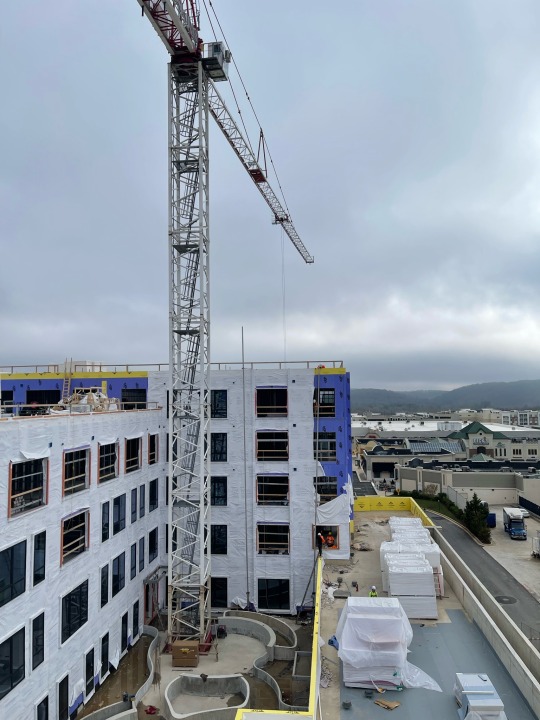
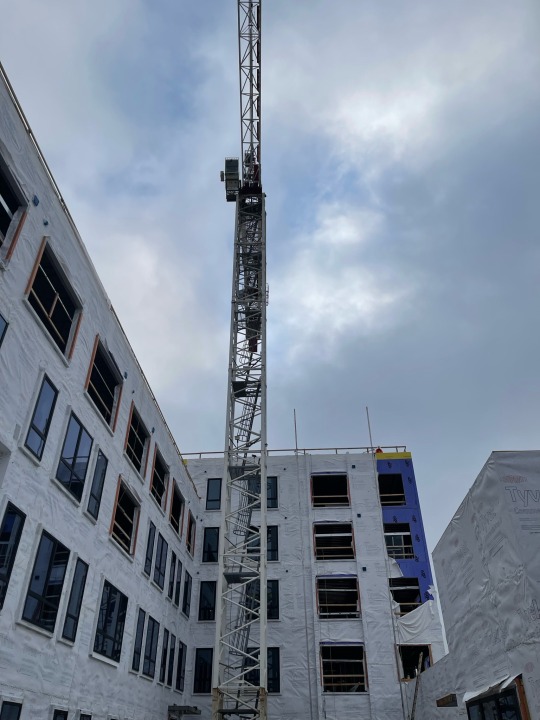

Construction Industry Braces for Tariffs: How Developers Are Adapting to Uncertainty
The construction and real estate development industries are navigating a perfect storm of potential cost increases, labor shortages, and policy-driven uncertainties. The latest concerns center around proposed tariffs on goods from Mexico and Canada, combined with immigration policies that could disrupt labor availability. These challenges are pushing developers to rethink their strategies in real time.
Material Costs: The Tariff Factor
Developers are on edge as the U.S. government considers imposing a 25% tariff on key construction materials like lumber, steel, and drywall. Suburban multifamily developments, which often rely heavily on Canadian lumber, are particularly vulnerable. Although material prices are well below their pandemic-era peaks, these new tariffs could tighten profit margins for new projects.
What It Means for Developers
• Higher Material Costs: A 25% tariff could significantly inflate budgets for projects already in the pipeline.
• Strategic Stockpiling: Builders are preemptively stockpiling materials, driving demand for industrial outdoor storage (IOS) spaces—a boon for investors in the IOS sector.
• Supply Chain Pressures: The surge in demand for storage is adding new stress to an already tight supply chain, creating logistical hurdles for developers.
Labor Shortages: A Growing Concern
Undocumented workers make up about 13% of the construction workforce nationwide, with higher concentrations in key markets like Texas, Florida, and California. Proposed immigration policies could lead to deportations, exacerbating labor shortages in an industry already stretched thin.
Who Will Be Impacted the Most?
• Small Projects: These often rely heavily on undocumented labor, putting them at the highest risk of delays and cost overruns.
• Unionized Developments: Larger, unionized projects may be less immediately affected, thanks to a more stable labor force.
The Economic Wildcard
The combination of tariffs, labor disruptions, and recent corporate tax cuts has economists warning of potential inflationary pressures. Rising costs for construction loans and bridge financing could ripple across the industry. However, some experts believe the Federal Reserve may act faster than in previous cycles to curb inflation, potentially mitigating the long-term impact.
Key Questions to Consider
• How will rising costs affect housing affordability?
• Could these challenges slow down the development of suburban multifamily projects?
• What steps should developers take now to hedge against these risks?
The Big Picture
In response to looming tariffs, developers are adjusting their strategies by stockpiling materials and rethinking project timelines. The ripple effects extend beyond construction sites to include industrial storage markets and broader economic trends.
For real estate developers and investors, this is a critical moment to stay informed and agile. Collaborating with supply chain experts, exploring alternative materials, and securing financing with built-in contingencies are just a few ways to stay ahead in this evolving landscape.
Let’s Discuss
What strategies are you considering to navigate these challenges? Share your thoughts and insights below—we’d love to hear how you’re adapting in these uncertain times.

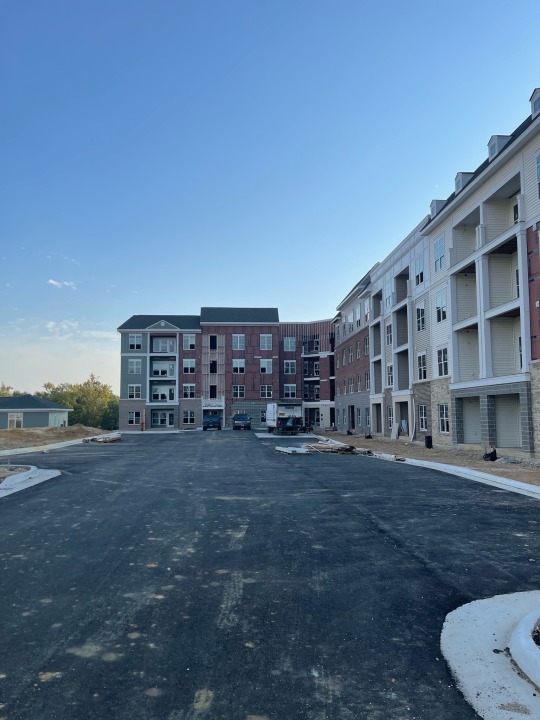

#construction#supply chain management#supply chain optimization#supply chain solutions#commercial and industrial sectors#self storage#real estate#investment#danielkaufmanrealestate#economy#real estate investing#daniel kaufman#housing#homes#politics#donald trump#economics
0 notes
Text
Durable Expansion Joint Covers | RNSKSA Fire and Safety Solutions
RNSKSA provides high-quality expansion joint covers designed for superior protection in construction and infrastructure projects. Our durable solutions prevent damage and ensure the safety of joints in buildings, roads, and industrial facilities. With a focus on innovation and reliability, RNSKSA offers products that meet international standards of quality and compliance. Whether for fireproofing, waterproofing, or acoustics, our expansion joint covers deliver long-lasting performance. Trust RNSKSA for efficient and cost-effective fire and safety solutions. Visit rnsksa.com to explore our full range of protective solutions.
#Expansion Joint Covers#Construction Solutions#Fire and Safety#RNSKSA#Industrial Protection#Joint Sealants#Building Safety#Infrastructure Solutions#Saudi Arabia#Waterproofing#Fireproofing
0 notes
Text
GRP Lining Solutions for Optimal Protection | RNSQatar
RNSQatar provides advanced GRP Lining solutions designed to offer superior corrosion resistance and waterproofing for a wide range of applications. Our durable, high-performance GRP coatings ensure long-lasting protection for infrastructure, industrial facilities, and construction projects. With expertise in fire and safety, we deliver reliable, customized solutions that meet the highest industry standards. Trust RNSQatar for innovative and effective GRP Lining systems that enhance the safety and longevity of your assets. Visit rnsqatar.com/grp-lining for more information.
#GRP Lining#Waterproofing#Corrosion Protection#Industrial Solutions#RNSQatar#Chemical Resistance#Durable Lining#Infrastructure Protection#Construction Services#Qatar#Fire and Safety#GRP Coating#Protective Solutions#Industrial Lining
0 notes
Text

Top 5 Instrumentation Products for the Construction Industry"
In the fast-paced construction sector, precision and reliability are crucial. Key instrumentation products that ensure smooth operations include:
Level Switches – Monitor material levels. Flow Meters – Ensure accurate liquid/gas flow. Temperature Sensors – Keep equipment in check. Pressure Transmitters – Monitor system pressures. Vibration Sensors – Safeguard machinery and structures. These tools enhance efficiency and safety, helping construction projects stay on track.
Explore our range of high-performance products at Calcon.
www.calconuae.com
0 notes